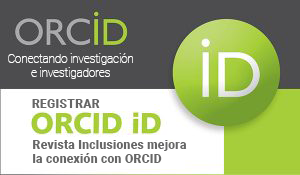PROBLEMS OF SPATIAL ORIENTATION AND MOBILITY OF STUDENTS WITH VISUAL IMPAIRMENTS
Palabras clave:
Students with visual impairments, Spatial orientation, mobility, Educational institutionResumen
The aim of this paper is to form knowledge and understanding of the existing specific features and difficulties of orientation in the enclosed space of students with visual impairments and to develop correctional-compensatory mechanisms of students with visual impairments. A complex of methods including analysis of the available general and specialized literature on research problems, a pedagogical experiment with interviews, interviews, remedial and practical exercises, and statistical processing was used. It should be noted that 11 students with total visual impairments who entered the Trans-Baikal state university and declared their desire to receive training in the spatial orientation program took part voluntarily in this study. All students are disabled persons of the 1-st group of vision. According to the indicators of loss of vision, all are late-onset blind persons, aged 14 to 24. The work done does not infringe on the rights and does not jeopardize the well-being of student in accordance with the ethical standards of the Committee for the Rights of Experiments of the Helsinki Declaration. It has been established that spatial orientation technologies for late-blind students are of a combined nature. It should be noted that the students with deep visual impairments have positive dynamics of the formation of skills of practical orientation in the surrounding reality during the training period.
Publicado
Cómo citar
Número
Sección
Los autores retienen los derechos de autor y otorgan a Revista Inclusiones el derecho de publicación bajo Creative Commons Attribution 4.0 International (CC BY 4.0). Esto permite el uso, distribución y reproducción en cualquier medio, siempre que se otorgue la debida atribución al autor.











